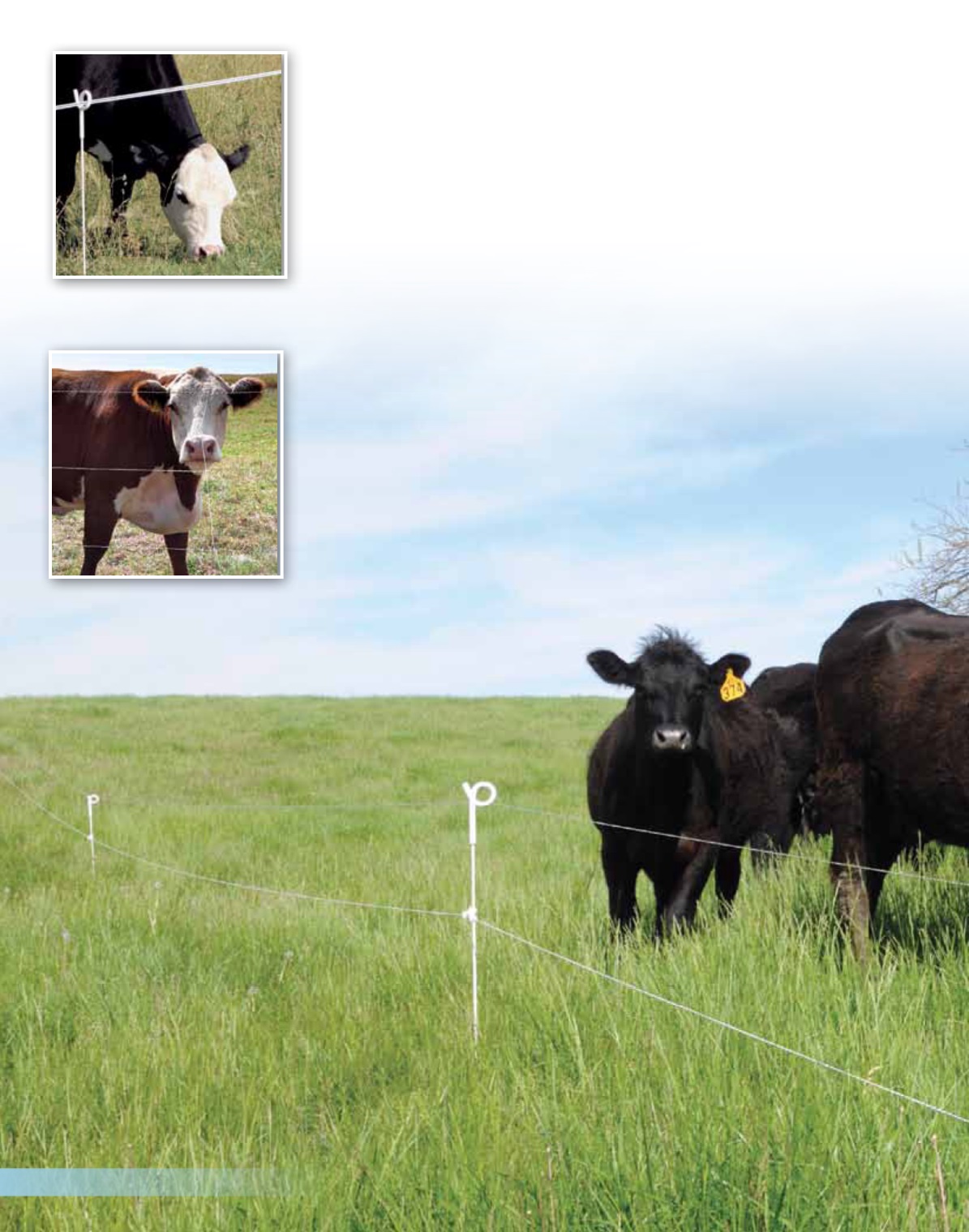
74 CATTLE FENCES
www.premier1supplies.com• 1-800-282-6631
Why electric cattle fences work
so well for so many…
• Because cattle are sensitive to electric
shock. Why? Short hair coat (in
summer), heavy body, large hooves—
so they’re low-resistance animals
(compared to goats and deer).
• The lowest energized wire can be 2
ft above the ground. Result: energy
loss from any grass-to-wire contact is
much less.
• Their frontal eye placement allows
them to see low-visibility fences
more readily than horses or deer.
• Their body weight ensures very good
hoof-to-soil contact.
• No major predators. So low fence
wires to deter predators are seldom
necessary. Again less weed-to-
electrified wire contact.
• Most (though not all) cattle walk
instead of run, giving them time to
see fences.
Combine these 6 factors and you have
an animal that’s easily controlled by
electric fences.
Temporary
Reel-Based, p. 76
Semi-Permanent
Cattle QuikFence, p. 77
Multi-Rope, p. 78
IntelliFence ® solutions for… CattleWhy some fences fail…
An electric fence is a system that’s only
as good as its weakest link. All parts
(posts, conductors, etc) of the system
must be durable
and
effective.
Probable reasons for problems
with electric cattle fences…
• Reliance on farmstore solar
energizers. They often promise
much and deliver little.
• Low-impedance energizers. They
work fine when the grass is green,
but their output in joules drops
quickly when the soil is dry.
• Polywires and polytape that lack
adequate visibility, conductivity and/
or durability.
• Using posts and insulators that are
prone to fail. The cheapest is rarely
the least expensive.
• Frustrating windup reels (or none
at all)! Good reels save time
and aggravation.









